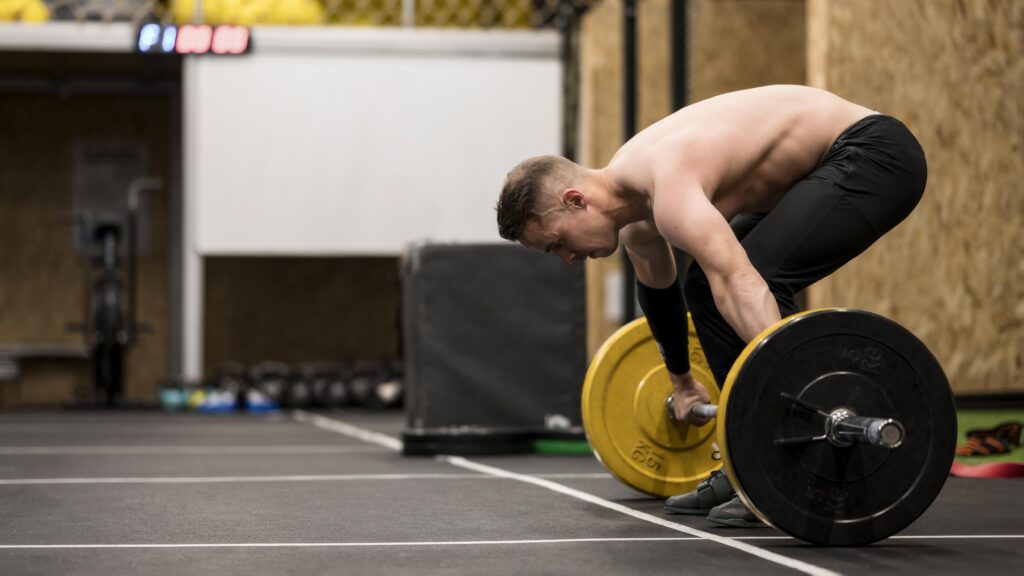Key Takeaways
- Maintain a neutral spine and engage your core during bench presses to prevent low back pain.
- Incorporate exercises like lower back extensions and deadlifts to strengthen the muscles supporting your spine.
- Follow a structured workout plan like the 15-Day Challenge to improve overall strength and reduce the risk of injury during bench press and other exercises.
6 Most Effective Tips for Avoiding Back Pain While Bench Pressing
- Understanding Low Back Pain During Bench Press
- Essential Techniques to Prevent Low Back Pain
- Lower Back Extensions
- How to Perform Lower Back Extensions
- Deadlifts
- How to Perform Deadlifts
- Incorporating the 15-Day Challenge Workout
- Sample 15-Day Challenge Workout Plan
- Conclusion
An essential exercise for developing upper body strength is the bench press, although improper execution can occasionally result in low back pain. We will discuss key methods and exercises to avoid low back pain when performing bench presses in this extensive tutorial. We will also talk about how a combination of lower back extensions and the 15-day challenge program can improve your general fitness routines and lessen your chance of injury.
Also read: 5 BEST BODYBUILDING SUPPLEMENTS FOR BODYBUILDERS
Understanding Low Back Pain During Bench Press
Compound exercises like the bench press target the chest, shoulders, and triceps. However, poor form or technique can overstress the lower back, resulting in discomfort or pain. While playing out a seat press, normal reasons for low back torment include:
- Unnecessary back angling: Unreasonable back curving overwhelms the lumbar spine, which can cause agony or harm.
- Lacking steadiness: When the lower body and center are not adequately steady, compensatory movements could happen, which put unnecessary burden on the lower back.
- Insufficient warm-up: When muscles and joints are not sufficiently warmed up before bench pressing, the risk of injury increases.

Essential Techniques to Prevent Low Back Pain
- Keep an unbiased spine: Keep your back level against the seat all through the activity. Lower back rounding or arching should be avoided.
- Connect with the center: Support your center muscles by envisioning as though you’re going to be hit directly in the gut. The lower back is shielded and stabilized as a result of this.
- Set up appropriately: Position your body on the seat with your feet solidly established on the ground. Guarantee your head, shoulders, and hips are in arrangement.
- Use the right grip width: Hold the barbell a little wider than shoulder-width apart to keep your shoulders in the right position and lessen the strain on your lower back.
- Control the plunge: Lower the hand weight taken care of, keeping your elbows tucked near your body. Keep away from quick or jerky developments that can strain the lower back.
Lower Back Extensions
Lower back extensions, also known as hyperextensions, target the erector spinae muscles, which support the spine and contribute to spinal stability. Performing this exercise regularly can help strengthen the lower back and reduce the risk of injury during bench press.
How to Perform Lower Back Extensions
- Place your feet under the pads and your hips at the edge of a hyperextension bench while lying face down.
- Cross arms or put hands behind your head.
- Using your core, raise your body gradually until it is in a straight line with your legs.
- At the peak of the exercise, tighten your glutes before lowering yourself back down slowly.
- Prioritize quality over number and aim for two to three sets of ten to fifteen repetitions.
Deadlifts
Deadlifts engage multiple muscle groups, such as the lower back, glutes, and hamstrings. Incorporating deadlifts into your workout routine can improve overall strength and stability, reducing the risk of low back pain during bench press.
How to Perform Deadlifts
- Stand with your feet hip-width separated, toes pointing forward, and a hand weight management situated before you. Pivot at the hips and curve your knees to drop down and grasp the free weight with an overhand hold, hands marginally more extensive than shoulder-width separated.
- Draw in your center, keep your back level, and drive through your heels to lift the hand weight, standing up tall at the top.
- Maintaining a close grip on the barbell as you perform the movement allows you to control its descent back down.
- Aim for three to four sets of six to eight repetitions each, gradually increasing the weight as you progress.

Incorporating the 15-Day Challenge Workout:
The 15-day challenge exercise is an organized work out regime intended to further develop strength, perseverance, and by and large wellness levels. By consolidating practices that target different muscle gatherings, including the lower back, the 15-day challenge can assist with forestalling low back torment during seat press and different activities.
Sample 15-Day Challenge Workout Plan:
- Day 1 through Day 5: Strength training for the upper body, including a proper bench press.
- Day 6-10: Lower body strength preparing (counting deadlifts and squats)
- Day 11 through Day 15: Core and stability exercises like planks and lower back extensions
Conclusion
Proper bench press technique, core stability, and lower back strengthening exercises are necessary to avoid back pain. By consolidating fundamental procedures, for example, keeping an unbiased spine and drawing in the center, alongside practices like lower back expansions and deadlifts, you can decrease the gamble of injury and further develop your seat press execution. Furthermore, incorporating the 15-day challenge exercise into your wellness routine can upgrade in general strength and perseverance, adding to a better and agony free preparation experience. Make sure to pay attention to your body, begin with lighter loads, and continuously progress to keep away from overexertion and injury. You can enjoy the benefits of bench pressing while reducing your risk of low back pain if you exercise consistently and with proper form.
Thank you for Reading!
I hope you found the information in this blog useful. For more content like this, please visit GetGoodLifeHacks.
